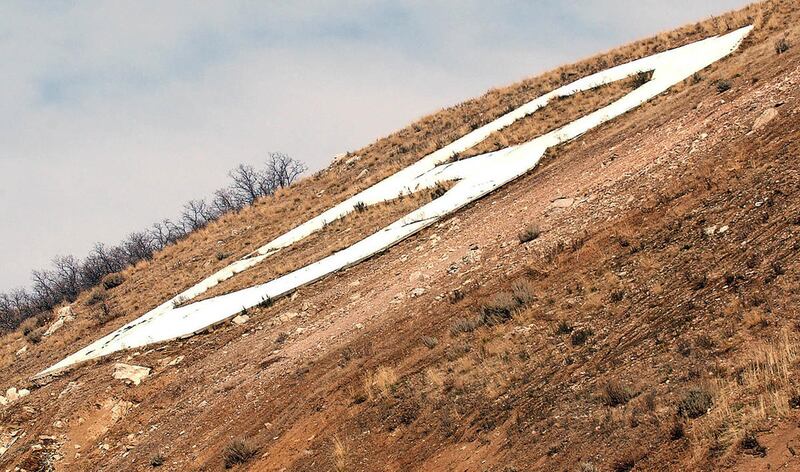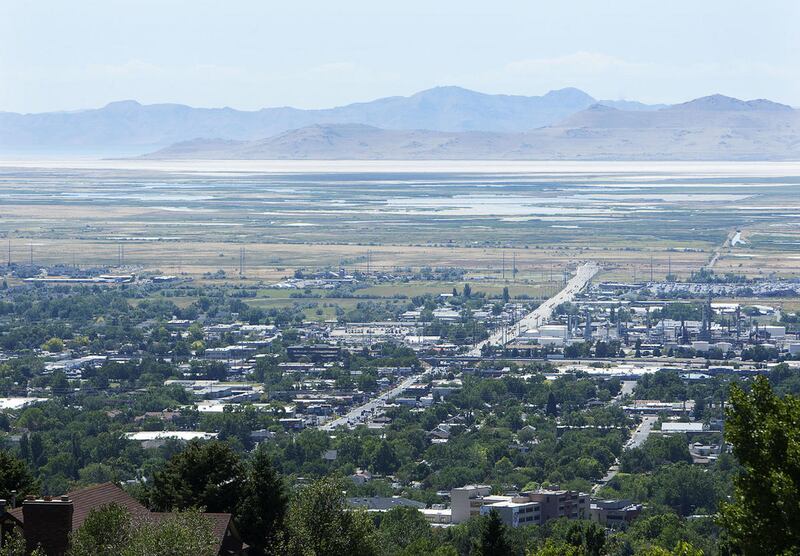As we get better information, we can make better choices. – Rep. Ray Ward, R-Bountiful
SALT LAKE CITY — A yearlong pollutants study by the Utah Department of Environmental Quality revealed a Bountiful monitoring site recorded high levels of formaldehyde, a toxic carcinogen commonly associated with certain types of manufacturing but also occurring naturally in the atmosphere.
The sporadic and seasonal spikes in formaldehyde reached levels approaching 20 parts per billion — putting Utah No. 1 in the country for the pollutant, according to the research.
Both the environmental agency and the health department stress that the levels of the toxin, while high, should not result in any lasting impact to a person's health.
"Even with the spikes in readings, this exposure is below the acute exposure limit by a factor of 10," said Steve Packham, the Department of Environmental Quality's toxicologist.
The agency has not yet isolated a source for the pollutant, but the monitor at Viewmont High School is not far from an industrial area, I-15 and refineries.
The study, which was part of a $1 million legislative appropriation for research, will move into a second phase with more intensive monitoring in Bountiful beginning this winter and into summer of next year.
The agency applied for a grant from the Environmental Protection Agency to track the source of elevated hazardous air pollutants at the Bountiful site, which also recorded significant concentrations of methylene chloride, which is contained in solvents such as paint strippers and in the manufacturing of drugs.
Packham said the levels, while high, are below the acute threshold exposure limit by a factor of 100 even at its highest peaks.
The peak in the toxins is short term, and the cancer risk assumes a daily average of breathing that concentration every day for an entire life, he added.
"If they do that, the EPA would estimate that their chance of cancer could exceed one in a million," Packham said.
The study allowed the division to monitor the concentration, trends and distribution of pollutants across the Utah and Salt Lake valleys with the installation of additional monitors in Lindon and West Valley City and by increasing the monitoring intensity at Bountiful.
Monitors looked at 82 organics and four heavy metal pollutants in approximately 300 samples collected over a full year. With the exception of formaldehyde, the hazardous air pollutants monitored during the study were either at or below average national levels, according to the study.
Higher lead concentrations were observed by the West Valley monitor over what was measured in Lindon or Bountiful, a factor possibly attributed to lead smelters or mining operations.
The study also revealed some good news by showing a dramatic decrease of 70 percent in benzene, which is generally a product of auto emissions. The change observed at the West Valley monitor over a 15-year period leads the Utah Division of Air Quality to believe the advent of cleaner car technology is responsible and suggests that the pollutant has decreased elsewhere along the Wasatch Front.
Matt Pacenza, executive director of HEAL Utah — a clean air advocacy group — said the study's results should not be cause for alarm, but they send a clear signal that more research is needed.
"These levels in and of themselves should not be causing panic in the streets of Bountiful. They are worrisome, but the concern is that we don't know the source," he said. "It is an alarming place to be to know we have a problem, but we don't know where it is coming from."
Pacenza added that he hopes the Division of Air Quality will be able to carry out its additional research to arrive at an answer.
"I would certainly hope they answer that question soon rather than later," he said.
Rep. Ray Ward, R-Bountiful, said the telling part of the study is that it underscores how much researchers are just beginning to learn about the air quality challenges in Utah.
"Part of the problem is that we still have things we don't know. That is why the funding was so important," said Ward, a primary care physician who says he sees the effects of poor air quality firsthand among his patients. "This study proves it was a good idea to approve the funding. As we get better information, we can make better choices."
As researchers and the Davis County Health Department work to isolate sources of the elevated levels of formaldehyde, Packham said the additional research may give the Division of Air Quality the tools it needs to tackle the problem.
"In other words, it opens the door for us to have some access to some regulatory authority," he said.
Email: amyjoi@deseretnews.com
Twitter: amyjoi16








